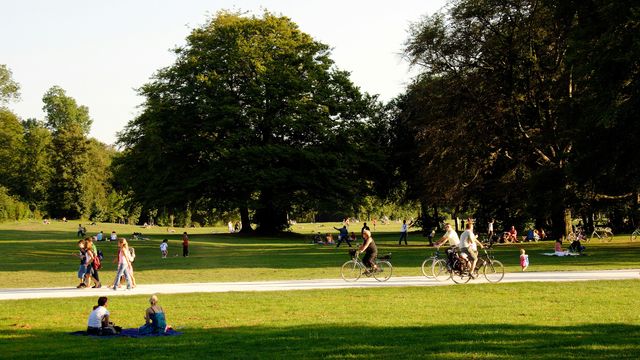Thank you. Listen to this article using the player above. ✖
Want to listen to this article for FREE?
Complete the form below to unlock access to ALL audio articles.
Children exposed to higher levels of greenery around their homes from the period before birth through early childhood may face a lower risk of developing neurodevelopmental conditions such as attention-deficit/hyperactivity disorder (ADHD), autism spectrum disorder (ASD) and other developmental delays, according to a study conducted by researchers at Rutgers University.
Medical records and satellite imaging show correlation
Published in Environment International, the research focused on whether living near green spaces at critical stages of early life – preconception, pregnancy and early childhood – was associated with the incidence of neurodevelopmental diagnoses later on.
The study used data from over 1.8 million mother–child pairs across several US states, collected between 2001 and 2014. All participants were enrolled in Medicaid, providing a socioeconomically diverse sample. Vegetation levels near the residential ZIP codes of the mothers were assessed using satellite imaging. The research team then analyzed how exposure to greenery correlated with later childhood diagnoses of neurodevelopmental disorders.
The study adjusted for a wide range of individual and community-level factors. The findings remained consistent across multiple sensitivity analyses, suggesting a robust relationship between green space exposure and reduced risk of conditions such as intellectual disability and learning difficulties.
“Our findings suggest that enhancing green space access in urban environments may support early childhood neurodevelopment and help reduce the burden of neurodevelopmental delays,” said senior study author Stefania Papatheodorou, an associate professor at the Rutgers School of Public Health.
Timing and location may influence effects
The benefits of greenery exposure varied depending on the developmental stage during which it occurred. For example, prenatal exposure was associated with a reduced risk of ASD, while preconception exposure correlated with a lower likelihood of intellectual disability. Early childhood exposure appeared protective against learning difficulties.
“We observed protective associations between residential green space and several neurodevelopmental outcomes across distinct exposure windows – preconception, prenatal and early childhood – suggesting the involvement of different underlying biological mechanisms,” said Papatheodorou.
“Associations were more pronounced among children living in urban areas, suggesting a potentially greater benefit of green space where it is limited,” Papatheodorou added. “Our findings suggest that enhancing green space access in urban environments may support early childhood neurodevelopment and help reduce the burden of neurodevelopmental delays.”
The protective associations were also seen to be stronger among children identified as Black or Hispanic, highlighting a potential role for environmental interventions in reducing health disparities.
Policy implications and next steps
The researchers believe that this study highlights how improving access to green spaces could serve as an important tool in supporting brain development during early life.
“These findings suggest that increasing green space access could be a potentially modifiable environmental strategy to reduce the risk of neurodevelopmental disorders among children, especially in vulnerable, low-income populations,” Papatheodorou said. “It also suggests that urban planning strategies that enhance residential greenness may have long-term developmental benefits for children.”
Future studies are expected to examine the underlying biological and environmental pathways that might explain the observed effects. Researchers also plan to explore how different types of green environments – such as parks, trails and recreational fields – might influence child development.
Reference: Choi HM, Huybrechts KF, Hernandez-Diaz S, et al. Preconception, prenatal and early childhood exposure to green space and risk of neurodevelopmental delays: a national cohort study among Medicaid enrollees. Environ Int. 2025;202:109666. doi: 10.1016/j.envint.2025.109666
This article has been republished from the following materials. Note: material may have been edited for length and content. For further information, please contact the cited source. Our press release publishing policy can be accessed here.
